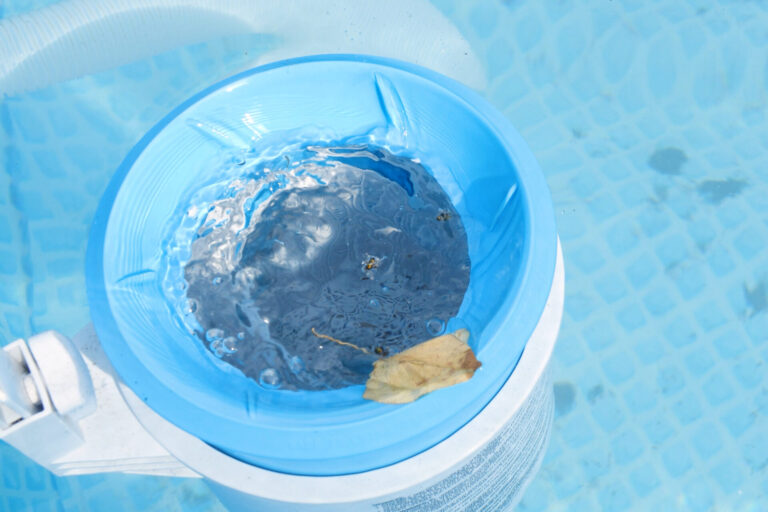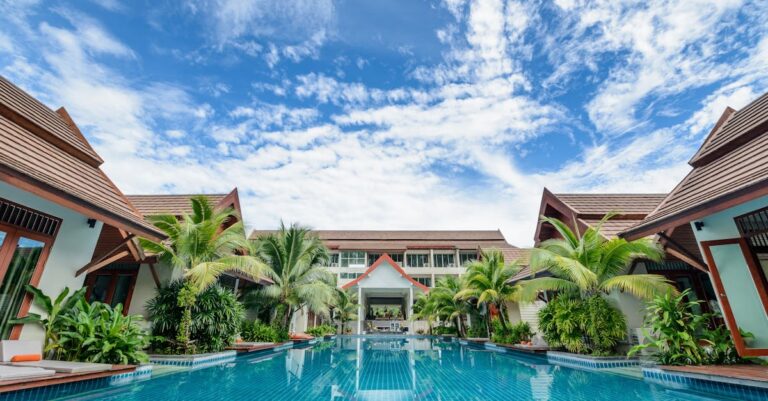10 Best Geothermal Heating Systems for Sustainable Pool Warmth You’ll Love
Discover the best geothermal heating systems for sustainable pool warmth, featuring eco-friendly options that save energy and costs while keeping your pool comfortable.
Looking to keep your pool warm while being eco-friendly? Geothermal heating systems offer an innovative solution that harnesses the earth’s natural energy. Discover the best options that not only save you money but also contribute to a sustainable lifestyle.
Disclosure: As an Amazon Associate, this site earns from qualifying purchases. Thank you!
WaterFurnace
Electric heat board 1076-12 efficiently distributes heat. This replacement part, model 17P514A01, ensures consistent and reliable performance.
You’ll love the efficiency of the WaterFurnace 5 Series. This system boasts a coefficient of performance (COP) rating often exceeding 5.0, which means it can produce over five times more energy in heating than it consumes. It integrates seamlessly with existing pool systems and can reduce your energy costs dramatically.
GeoComfort Tranquility Series
You’ll appreciate the GeoComfort Tranquility Series for its versatility and energy efficiency. This system is designed with variable-speed technology, ensuring optimal energy use regardless of outside temperatures. It’s particularly effective in climates with moderate to high-temperature fluctuations.
ClimateMaster Trilogy 45
You can count on the ClimateMaster Trilogy 45 to warm your pool sustainably. With its two-stage compressor, this system excels in both heating and cooling, maintaining a comfortable water temperature year-round while minimizing energy expenditure.
Bosch Greensource
You might find the Bosch Greensource to be a compact yet powerful option. Its compact design makes it ideal for smaller properties while still delivering impressive heating capabilities. Plus, it’s known for its whisper-quiet operation, enhancing your poolside experience.
Friedrich CP12G10B
You’ll be impressed by the Friedrich CP12G10B, which is especially appealing for larger pools. This geothermal system offers significant heat output, ensuring your swimming season lasts longer while keeping energy usage in check.
Make sure to assess your pool size, local climate, and energy consumption needs when choosing a geothermal heating system. By investing in one of these eco-friendly options, you’re ensuring sustainable warmth for your pool that benefits both you and the environment.
Understanding Geothermal Heating Systems
Geothermal heating systems are changing the game for eco-friendly pool warming, utilizing the Earth’s natural energy to keep your pool at the perfect temperature. Let’s dive into the specifics!
What Is Geothermal Heating?
Geothermal heating taps into the Earth’s inherent warmth, which means “earth heat.” This method revolves around harnessing stable underground temperatures—often around 75°F in many areas—to warm your pool efficiently and sustainably. It’s an innovative solution that not only reduces energy costs but also provides a guilt-free way to enjoy your swim.
How Do Geothermal Heating Systems Work?
Geothermal heating systems work on the principle of heat transfer rather than generating heat. Here’s a simplified breakdown:
- Heat Source: The Earth’s crust serves as a consistent heat reservoir, which is the cornerstone for effective geothermal systems.
- Loop System: A loop system is installed underground that either runs horizontally or vertically to capture and transfer that stable heat efficiently.
With proper installation and upkeep, these systems can greatly enhance your pool experience, making sure the water stays warm while minimizing your environmental footprint.
Advantages of Geothermal Heating Systems for Pools
Geothermal heating systems offer an impressive array of benefits that make them a top choice for pool warmth. These systems represent not just an effective heating method but also a sustainable way to enjoy your outdoor recreation.
Energy Efficiency and Cost Savings
Geothermal heating takes full advantage of stable underground temperatures, making it incredibly energy-efficient. For instance, systems like the PH90 GeoThermal heater deliver approximately 99,000 BTUs per hour while boasting a Coefficient of Performance (COP) of 5.8—that’s about 30% more efficient than conventional air source heat pumps. You’ll notice significant cost savings too; for example, maintaining your pool at 84°F can cost you just $700 to $800 annually with geothermal, compared to a staggering $6,000 with natural gas or propane systems.
Environmental Impact and Sustainability
Geothermal systems are also a more eco-friendly option for heating your pool. By utilizing the Earth’s natural warmth, they drastically reduce the need for high-energy inputs. This sustainable approach not only lowers your carbon footprint but also minimizes environmental disruption. With geothermal heating, you can enjoy your pool guilt-free, while contributing positively to our planet’s health—all while keeping your swimming experience comfortable year-round.
Types of Geothermal Heating Systems for Pools
When it comes to keeping your pool warm sustainably, understanding the different types of geothermal heating systems can make all the difference. Below, you’ll find an overview of three primary systems to help you choose the perfect fit for your needs.
Closed-Loop Systems
Closed-loop systems circulate a heat transfer solution—typically a water-glycol mixture—through buried or submerged plastic pipes. These systems form a closed circuit that connects to an indoor heat pump, efficiently recycling the solution for heating and cooling. You’ll find various configurations: horizontal systems use trenches, vertical systems are installed in deep boreholes, and pond/lake systems rely on submerged pipes. This durability can last between 50 to 100 years with minimal maintenance and is not dependent on a nearby water source.
Open-Loop Systems
Open-loop systems use an existing water source, like a well or a pond, to provide geothermal heating. By pulling water through the heat exchanger, these systems can transfer heat directly to your pool. The process is highly efficient, but you may face regulations regarding water usage and must ensure the water source is consistently available. This option is typically more cost-effective for those who have a suitable water source nearby, offering considerable energy savings over traditional heating methods.
Hybrid Systems
Hybrid systems combine geothermal technology with traditional heating sources, creating a versatile solution for pool temperature management. They switch between geothermal energy and standard electric or gas systems, depending on efficiency and cost-effectiveness. This flexibility allows for optimal performance during different seasonal conditions and can address varying energy demands. For instance, in colder climates, you’ll appreciate the reliability of a hybrid system when geothermal alone may struggle to maintain your desired pool temperature.
By evaluating these options and their unique advantages, you can make a well-informed decision that suits your lifestyle and environmental goals.
Top Best Geothermal Heating Systems for Sustainable Pool Warmth
When it comes to efficiently heating your pool while being kind to the environment, geothermal heating systems stand out. These systems harness the Earth’s stable temperatures, ensuring you enjoy warm water year-round. Here are some of the best options available:
System 1: PH90 GeoThermal Pool Heater
Quickly heat water with this 2000W immersion heater. Its stainless steel guard ensures safety, while the included thermometer allows for easy temperature monitoring in buckets, tubs, and more.
The PH90 GeoThermal Pool Heater is a top contender, boasting an impressive output of about 99,000 BTUs per hour. This system features a Coefficient of Performance (COP) of 5.8, making it 30% more efficient than air source heat pumps. It operates quietly at only 45 decibels and effectively heats and cools the pool.
System 2: AquaCal Geothermal Water Source Pool Heat Pumps
The AquaCal Water Source Pool Heat Pumps excel at transferring free heat from nearby water sources, such as wells or lakes. With its patented ThermoLink Titanium Heat Exchanger, this system ensures durability and efficiency. Models WS05 and WS10 include dual thermostats, allowing both pool and spa control while offering heating and cooling options.
System 3: WaterFurnace 5 Series
Electric heat board 1076-12 efficiently distributes heat. This replacement part, model 17P514A01, ensures consistent and reliable performance.
The WaterFurnace 5 Series is known for its stellar efficiency and reliability. This system operates using a closed-loop design, ensuring constant performance. You’re likely to see a reduction in energy costs and a minimal environmental impact, making it an ideal choice for eco-conscious pool owners.
System 4: GeoComfort Tranquility Series
The GeoComfort Tranquility Series utilizes variable-speed technology to optimize energy use based on pool temperature. This adaptability means you don’t have to compromise between comfort and cost. This system is also designed to offer both heating and cooling, giving you versatility throughout the year.
System 5: ClimateMaster Trilogy 45
The ClimateMaster Trilogy 45 stands out with its dual functionality for heating and cooling your pool. This energy-efficient system boasts a high COP, making it a sustainable choice. Whether you’re enjoying a summer swim or cooling your pool for a winter refresh, this system fits your needs perfectly.
Factors to Consider When Choosing a Geothermal System
When you’re considering a geothermal heating system for your pool, it’s essential to weigh a few key factors to ensure you select the best option for your needs.
Size and Type of Pool
Understanding the size and type of your pool is critical for determining the right geothermal system. Larger pools, such as Olympic-sized ones, typically need more powerful geothermal heat pumps to maintain optimal temperatures. For instance, the PH90 GeoThermal pool heater excels in larger setups, producing around 99,000 BTUs per hour. A system’s efficiency can vary significantly, so choose one that matches your pool’s specific heating requirements.
Installation Requirements
Checking the Installation Requirements is vital for a successful geothermal system. You’ll need to assess the geology and hydrology at your site, as factors like soil type and depth can impact performance. Ideal conditions might include sandy soil with good groundwater availability. If your property is rocky or has limited water access, you may face challenges that affect system efficiency. Engaging a professional for a site evaluation can help steer you towards the right decision.
Maintenance Needs
Considering the Maintenance Needs of geothermal systems is another important aspect. Generally, these systems are low-maintenance compared to traditional options, but routine checks are still necessary. Monitor components like heat pumps and underground loops for any signs of wear. Over time, you might need to flush loops or check fluid levels. Setting a seasonal maintenance schedule can help prolong the system’s lifespan and ensure your pool remains at a comfortable temperature year-round.
Conclusion
Choosing a geothermal heating system for your pool is a smart move toward sustainability and cost savings. With options that cater to various pool sizes and climates, you can enjoy warm water year-round without the hefty energy bills associated with traditional heating methods.
By investing in a high-efficiency system, you’re not just enhancing your swimming experience but also making a positive impact on the environment. Remember to assess your specific needs and local conditions to find the perfect fit. With the right geothermal system, you’ll enjoy a comfortable pool while contributing to a greener future.







